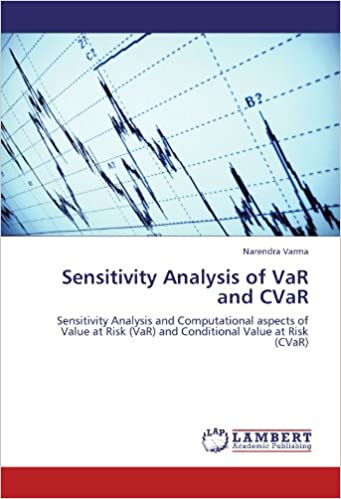A Gentle Guide to Sum of Squares: SST, SSR, SSE
Contents:
As more data points are added to the set, the sum of squares becomes larger as the values will be more spread out. The regression sum of squares is used to denote the relationship between the modeled data and a regression model. A regression model establishes whether there is a relationship between one or multiple variables. Having a low regression sum of squares indicates a better fit with the data. A higher regression sum of squares, though, means the model and the data aren’t a good fit together.
You can interpret a smaller RSS figure as a regression function that is well-fit to the data while the opposite is true of a larger RSS figure. A low sum of squares indicates little variation between data sets while a higher one indicates more variation. Variation refers to the difference of each data set from the mean. If the line doesn’t pass through all the data points, then there is some unexplained variability. We go into a little more detail about this in the next section below. The minimum value for an SST is 0, and this can only occur when the sample has no variability, meaning all data values are equal.

The technique is widely used by statisticians, scientists, business analysts, finance professionals, traders, etc. For example, traders can use this method to evaluate the stock price movement around the mean price. The sum of squares is a statistical measure of deviation from the mean.
A Pythagorean prime is a prime that is the sum of two squares; Fermat’s theorem on sums of two squares states which primes are Pythagorean primes. Jacobi’s four-square theorem gives the number of ways that a number can be represented as the sum of four squares. Click the square and drag it down to the last row of number pairs to automatically add the sum of the rest of the squares. Start a new column anywhere in an Excel spreadsheet and label it. The squares don’t have to be next to each other, nor does the output section; it can be anywhere on the page. Structured Query Language What is Structured Query Language ?
The sum of squares is one of the most important outputs in regression analysis. The general rule is that a smaller sum of squares indicates a better model, as there is less variation in the data. Okay, we slowly, but surely, keep on adding bit by bit to our knowledge of an analysis of variance table. Variation is a statistical measure that is calculated or measured by using squared differences. To calculate the sum of squares, subtract the data points from the mean, square the differences, and add them together. For wide classes of linear models, the total sum of squares equals the explained sum of squares plus the residual sum of squares.
Partitioning in the general ordinary least squares model
The big sigma at the beginning is tell you to add all of these individual participants’ averages together. You can take your skills from good to great with our statistics course. Let’s use Microsoft as an example to show how you can arrive at the sum of squares. Investors can use the sum of squares to help make better decisions about their investments. For representing a polynomial as the sum of squares of polynomials, see Polynomial SOS.For computational optimization, see Sum-of-squares optimization. Pythagorean quadruples are sets of four integers such that the sum of the squares of the first three equals the square of the fourth.
For instance, you can use the sum of squares to determine stock volatility. A low sum generally indicates low volatility while higher volatility is derived from a higher sum of total sum of squares formula squares. The following is the formula for the total sum of squares. The Squared Euclidean distance is defined as the sum of squares of the differences between coordinates.
- A low sum generally indicates low volatility while higher volatility is derived from a higher sum of squares.
- Introduction to Statistics is our premier online video course that teaches you all of the topics covered in introductory statistics.
- Similar terminology may also be used in linear discriminant analysis, where W and B are respectively referred to as the within-groups and between-groups SSP matrices.
- A higher regression sum of squares indicates that the model does not fit the data well.
- The general rule is that a smaller sum of squares indicates a better model, as there is less variation in the data.
- Next, we can use the line of best fit equation to calculate the predicted exam score () for each student.
Analysts and investors can use the sum of squares to make better decisions about their investments. Keep in mind, though that using it means you’re making assumptions about using past performance. For instance, this measure can help you determine the level of volatility in a stock’s price or how the share prices of two companies compare. Called the “error sum of squares,” as you know, it quantifies how much the data points vary around the estimated regression line. Review the following scatter plot and estimated regression line. What does the plot suggest for answering the above research question?
A goodness-of-fit test helps you see if your sample data is accurate or somehow skewed. Discover how the popular chi-square goodness-of-fit test works. Thus, if we know two of these measures then we can use some simple algebra to calculate the third. Linear regression is used to find a line that best “fits” a dataset. As we’ll soon formalize below, SS is the sum of squares between the group means and the grand mean.
Sum of Squares Formula
The residual sum of squares essentially measures the variation of modeling errors. In other words, it depicts how the variation in the dependent variable in a regression model cannot be explained by the model. SS involves calculating mean value, variations, and a total of squares of variations. Whenever a data set is taken for study, its average or mean is a commonly calculated item which further helps in defining other values related to the data. For example, the mean is important for calculating SS, and averaging the SS gives variance, and standard deviation can be derived by computing the square root of variance.

To get a more realistic number, the sum of deviations must be squared. The sum of squares will always be a positive number because the square of any number, whether positive or negative, is always positive. The formula we highlighted earlier is used to calculate the total sum of squares. The total sum of squares is used to arrive at other types. If there is a linear relationship between mortality and latitude, then the estimated regression line should be “far” from the no relationship line.
Sum of Squares Explained
Well, they are the determinants of a good linear regression. This tutorial is based on the ANOVA frameworkyou may have heard before. Variance is https://1investing.in/ a measurement of the spread between numbers in a data set. Investors use the variance equation to evaluate a portfolio’s asset allocation.

We will look at a sample with a low SST, a sample with a high SST, and a sample with an SST of 0. Goutham graduated from the University of Virginia with a BS in Engineering Science . While at UVA, he worked as a tutor for other undergraduate students in probability and statistics. Statology is a site that makes learning statistics easy by explaining topics in simple and straightforward ways. This tells us that 88.36% of the variation in exam scores can be explained by the number of hours studied.
Statology Study
The sum of squares takes historical data to give you an indication of implied volatility. Use it to see whether a stock is a good fit for you or to determine an investment if you’re on the fence between two different assets. Keep in mind, though, that the sum of squares uses past performance as an indicator and doesn’t guarantee future performance.
In order to calculate the sum of squares, gather all your data points. Then determine the mean or average by adding them all together and dividing that figure by the total number of data points. Next, figure out the differences between each data point and the mean. Then square those differences and add them together to give you the sum of squares. The most widely used measurements of variation are the standard deviation and variance. However, to calculate either of the two metrics, the sum of squares must first be calculated.
It is calculated by adding together the squared differences of each data point. To determine the sum of squares, square the distance between each data point and the line of best fit, then add them together. Sum of squares is a statistical tool that is used to identify the dispersion of data as well as how well the data can fit the model in regression analysis. The sum of squares got its name because it is calculated by finding the sum of the squared differences. R-squared, sometimes referred to as the coefficient of determination, is a measure of how well a linear regression model fits a dataset. It represents the proportion of the variance in the response variable that can be explained by the predictor variable.
How far individual values are from the mean may provide insight into how fit the observations or values are to the regression model that is created. The sum of squares method discloses the overall variance of the observations or values of dependent variable in the sample from the sample mean. The concept of variance is important in statistical techniques, analysis, and modeling, especially regression analysis.
Timothy Li is a consultant, accountant, and finance manager with an MBA from USC and over 15 years of corporate finance experience. Timothy has helped provide CEOs and CFOs with deep-dive analytics, providing beautiful stories behind the numbers, graphs, and financial models. For representing a multivariate polynomial that takes only non-negative values over the reals as a sum of squares of rational functions, see Hilbert’s seventeenth problem.
All these values are useful in understanding how dynamic the data set is or how far or close it is to the mean. The residual sum of squares is a statistical technique used to measure the variance in a data set that is not explained by the regression model. The term sum of squares refers to a statistical technique used in regression analysis to determine the dispersion of data points. The sum of squares can be used to find the function that best fits by varying the least from the data.
This intuitively makes sense, because the sum of squared terms must be nonnegative. The sum of squares is the statistical method used to measure the variation of a data set from its mean. The least squares method is a statistical technique to determine the line of best fit for a model, specified by an equation with certain parameters to observed data. In regression analysis, the three main types of sum of squares are the total sum of squares, regression sum of squares, and residual sum of squares.
Pythagorean triples are sets of three integers such that the sum of the squares of the first two equals the square of the third. For the number of representations of a positive integer as a sum of squares of k integers, see Sum of squares function. To apply the formula to additional cells, look for the small filled square in the cell that contains the solution to our first problem. Let’s use these steps and definitions to find the SST of three different samples.
The Pythagorean theorem says that the square on the hypotenuse of a right triangle is equal in area to the sum of the squares on the legs. The sum of squared dimensions of a finite group’s pairwise nonequivalent complex representations is equal to cardinality of that group. Close the parenthesis and press “Enter” on the keyboard to display the sum of both squares. Alternatively, if you can keep going here, adding additional cells by separating each with a comma within the formula. Finding the sum of squares in Microsoft Excel can be a repetitive task. The most obvious formula requires a lot of data entry, though there’s a lesser-known option that gets you to the same place.

Deixe uma resposta